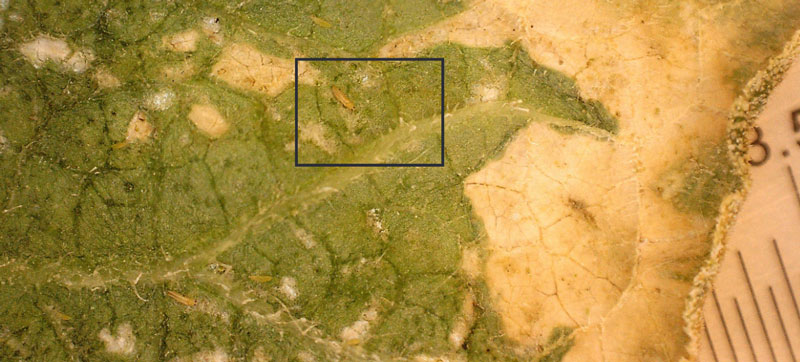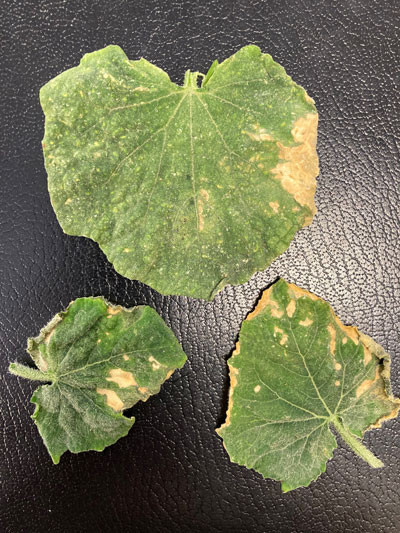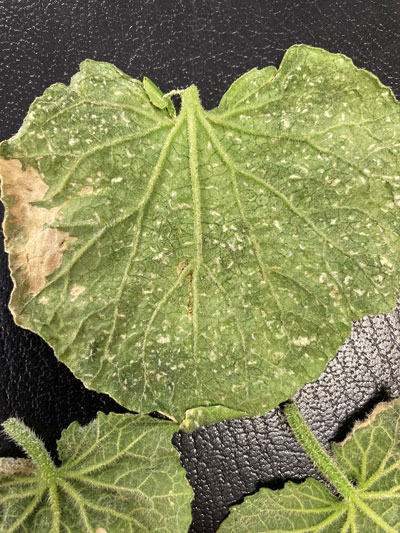Thrips on Vegetables and Flowers

A thrips on a cucumber leaf. Photo by Sharla Sackman. Larger image (698K)
With hot and dry weather, thrips populations increase on many of our vegetables and flowers. Thrips are small, yellowish insects that reside on the undersides of the leaves, and the pest thrips that we have puncture the cells on the leaf surface to drink or suck plant juices.
Plant Symptoms and Damage

Thrips damage on the upper surface of a cucumber leaf. Photo by Sharla Sackman. Larger image (1.6MB)

Thrips damage on the underside of a cucumber leaf. Photo by Sharla Sackman. Larger image (1.5MB)
Thrips cause scarring and silvery type injuries to the leaves and flowers. The leaves can become necrotic with heavy infestations, and distortion can occur. Thrips are commonly associated with drought-stressed vegetables/plants and have a variety of hosts from vegetables to grasses and flowers.
Management
Non-Chemical
Overhead water your plants with heavy jets of water on hot days on a regular basis (if practical), but in the morning to prevent issues with powdery mildew. You can also use yellow sticky traps to catch the winged adults. Deadhead all of your flowers and control surrounding weeds (serve as alternative hosts).
Biological Control
Predatory thrips and mites can be used as natural enemies of these pest thrips. They can be purchased from places like Arbico Organics and IPM labs.
Chemical Control
The active ingredient spinosad is effective against thrips (products such as Monterey Garden Insect Spray, Captain Jack’s). Other active ingredients that can be used include neem oil, insecticidal soaps, and horticultural oils. These can be purchased at a garden or hardware store. Follow the label. Thrips are active on the undersides of the leaves, so target these areas well when spraying.
Further Information
To learn more about the topics discussed on this page, contact the Schutter Diagnostic Lab. If you suspect an infestation on your property, contact your local extension agent, the Schutter Diagnostic Lab at Montana State University, or the Montana Department of Agriculture.
This July 2021 fact sheet is also available as a Printable PDF (1.26MB).
Disclaimer: These recommendations are provided only as a guide. It is always the pesticide applicator’s responsibility, by law, to read and follow all current label directions for the specific pesticide being used. If any information in these recommendations disagrees with the label, the recommendation must be disregarded. No endorsement is intended for products mentioned. The authors and Montana State University assume no liability resulting from the use of these recommendations. The Montana State University Extension Service is an ADA/EO/AA/Veteran’s Preference Employer and Provider of Educational Outreach.
